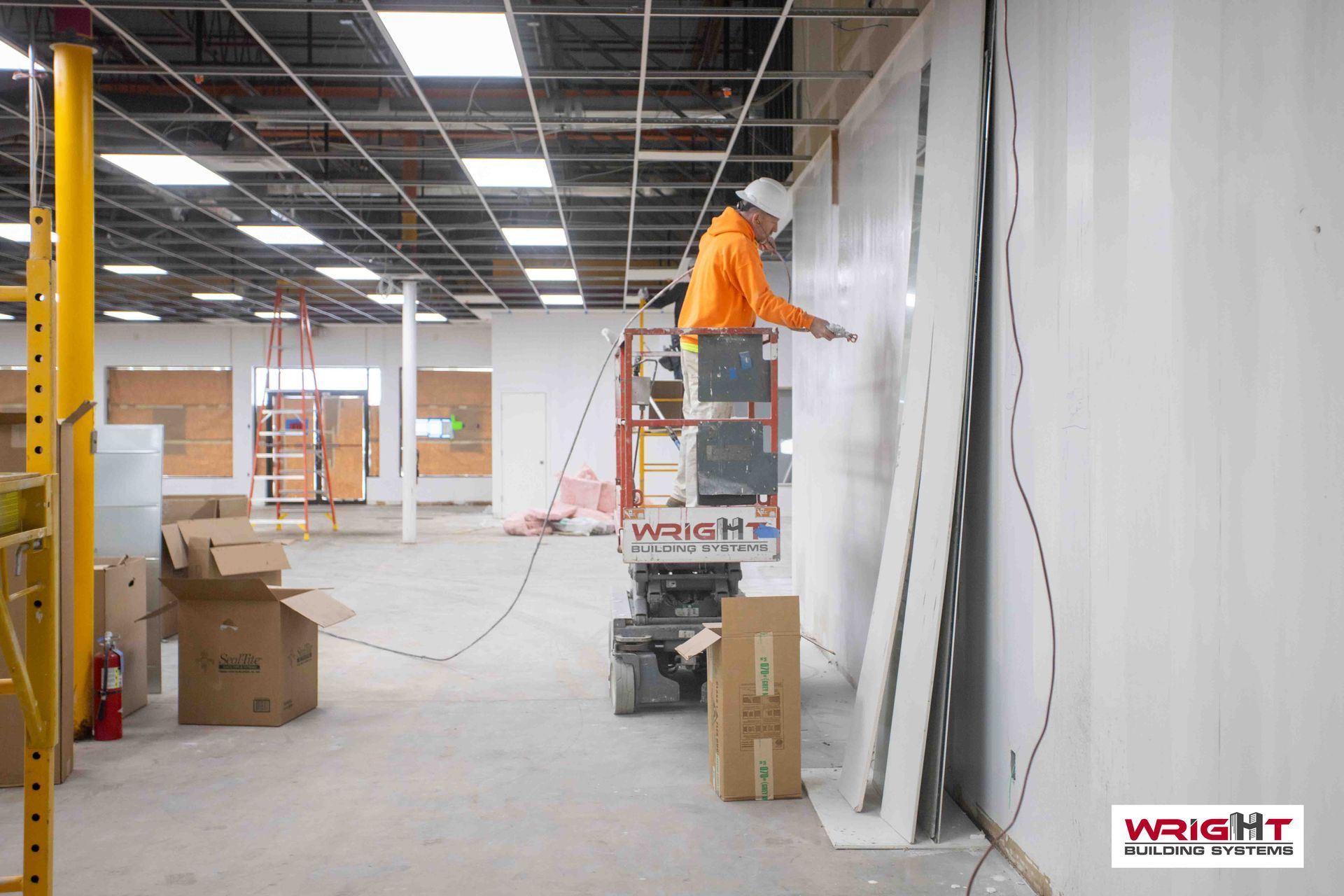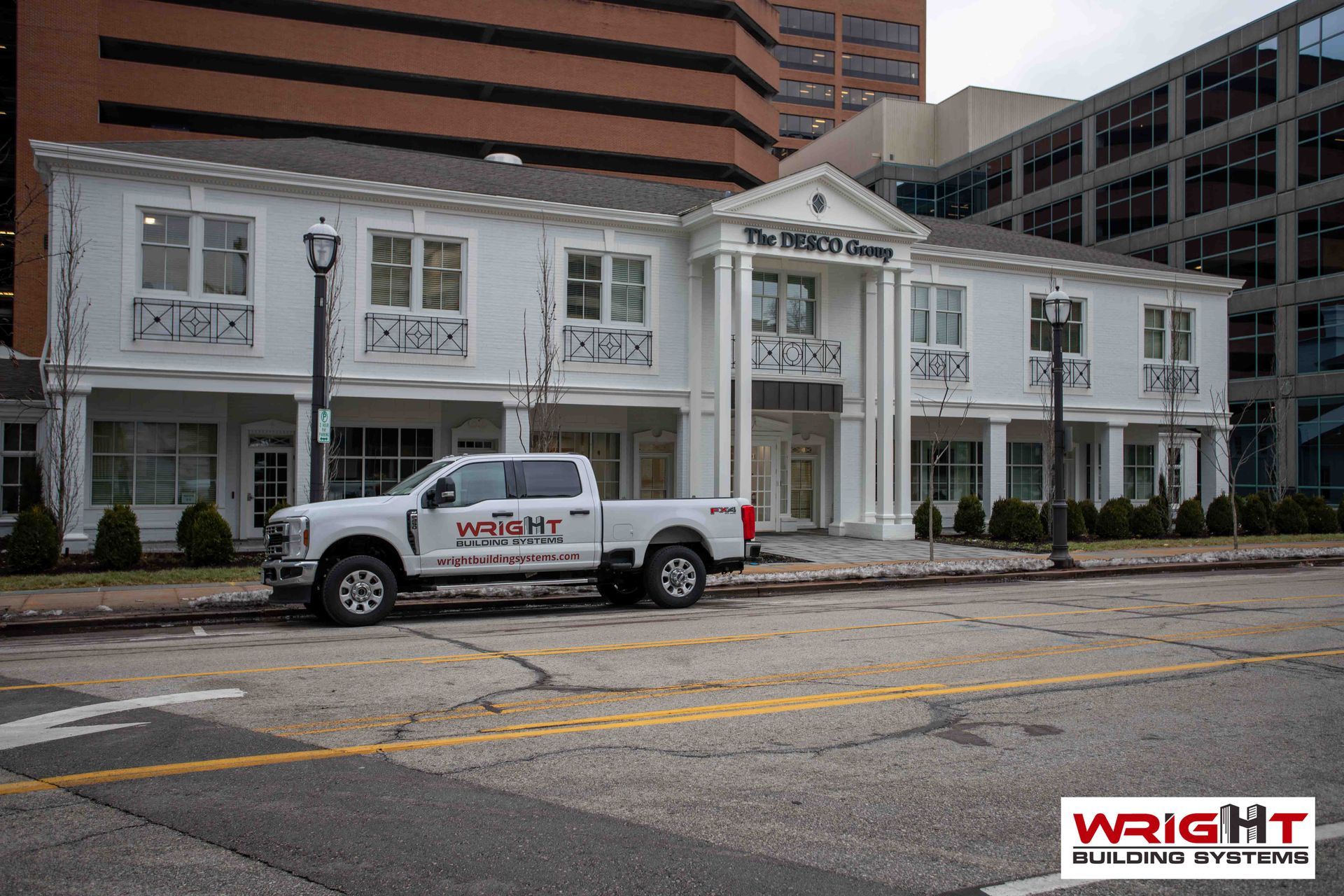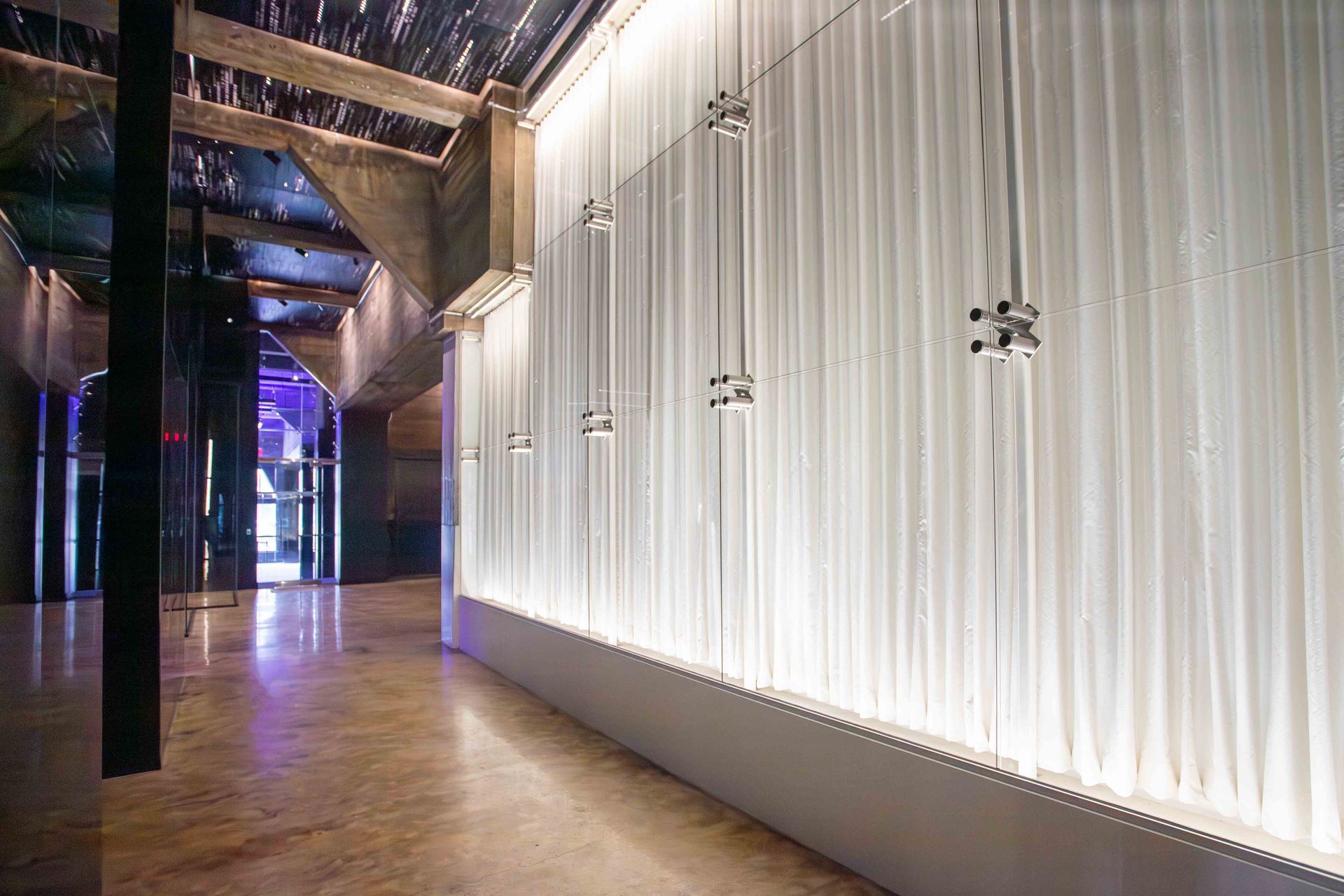Damage Assessment for Commercial Buildings After Severe Weather
The start of spring often brings volatile, extreme weather to the Midwest and other parts of the country, and this year has followed suit.
In mid-March of this year, tornadoes, high winds, and hail hit several areas in Greater St. Louis, specifically Arnold, Missouri (314 Day Storms).
Our Wright Building Systems team collaborated with our friends at The DESCO Group, Inc. to start a clean up after the following day after the storm. We are proud to serve our clients and community.
This experience reminds us that commercial buildings can take massive hits during severe weather and natural disasters, and often, our only defense is preparation.
Let's discuss preparation and mitigation tips that building owners, construction companies, and individuals can utilize during stormy seasons.
Severe Weather Preparation: Emergency Exits and Protocols
Preparation means everything in the face of severe weather. Commercial property owners should ensure a robust emergency protocol, including everything from alarm systems to staff drills to backup power.
Remembering all of the emergency protocols in the face of an incoming severe weather event can be daunting, so practice is key for building owners, managers, and staff. Then, when the storm comes, proper protocol will be second nature.
One excellent resource for property owners and community members is the National Weather Service's StormReady® program.
Secure the Building
Many severe weather events require an evacuation. If you and your team know you must evacuate your building in advance, you should do everything possible to secure it.
In cases where an evacuation isn't necessary or you don't know beforehand, try to secure the building and keep anyone inside safe.
What does securing the building look like? Follow all safety protocols for the respective severe weather events.
Close and board up windows and doors, tie down any objects that could be harmful if flying around, and store any valuables in a safe space.
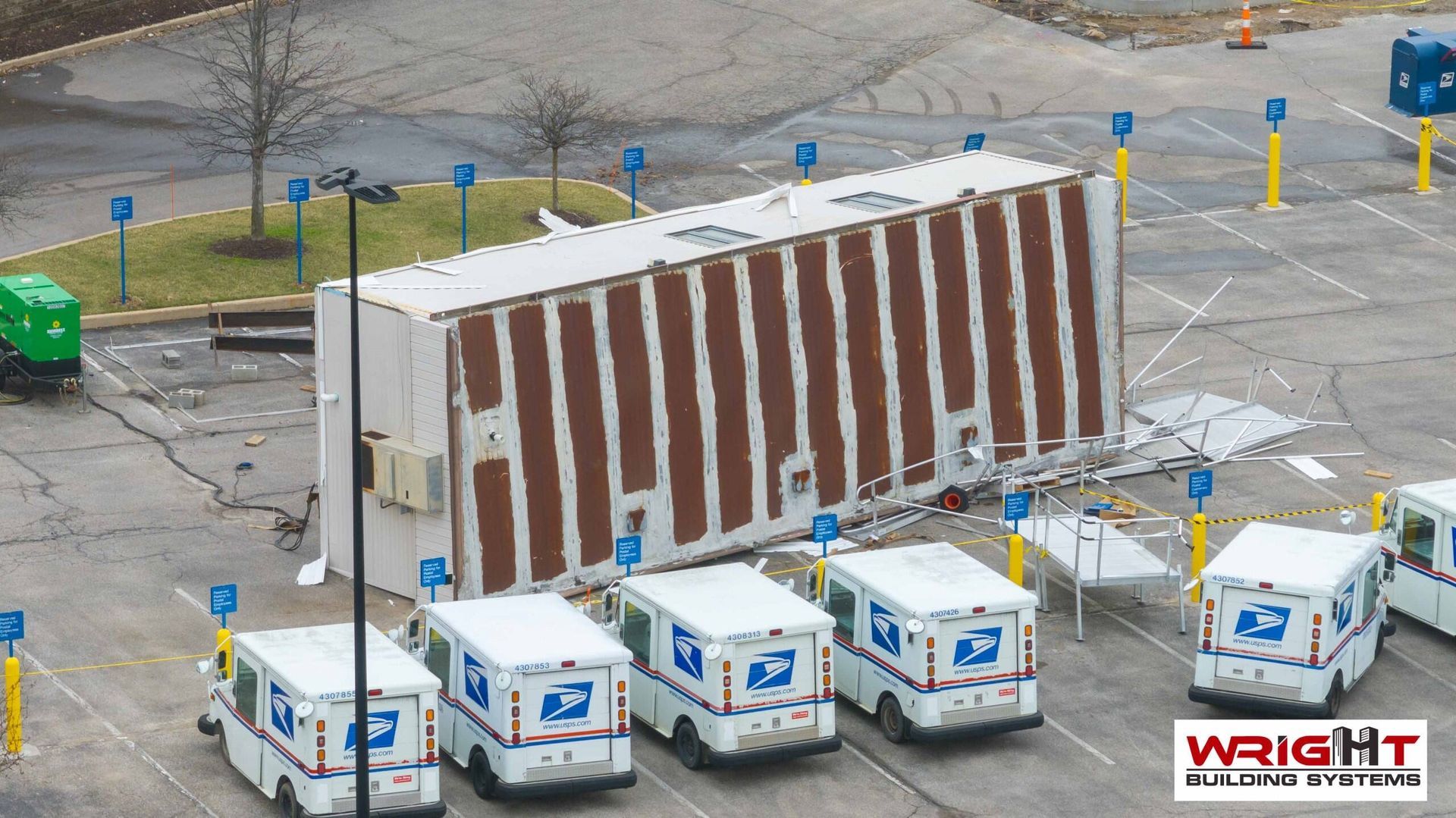
Damage Assessments
The morning after tornadoes hit some of our clients' buildings in Arnold, the first order of business was to perform a damage assessment.
When undertaking this crucial step, ensure you and your team wear proper personal protective equipment (PPE) and plan a route to survey the damage.
Crews or volunteers must take extra caution, as falling debris or structural damages create unsafe conditions around the building. A drone or other technology can help assess larger-scale damages to a full area if possible.
Mitigate Fire and Water Damage
After severe weather, fire and water damage are the most common damages buildings will have. Commercial restoration is key to getting your business back up and running.
A restoration team will work to preserve damaged items, assess structural concerns, and restore what was lost.
Prioritize What Needs Clean-Up
One of the most challenging parts of clean-up projects after storms is prioritizing the next steps.
Often, several structures or areas will need your attention. This process has no golden rule, so each situation will be different.
Typically, a safe bet is to consider which tasks must be completed before the building can be opened again to customers and staff and which could wait until later.
For instance, if the wind damaged signage in the parking lot and a structure in the back near the loading dock, the team should consider fixing whichever part is more critical to resuming normal operations.
Fixing the loading dock is usually more pressing to ensure that deliveries can pass through, but in some cases, the front signage could be of greater importance.
Either way, go through the issues and develop a timeline to make repairs.
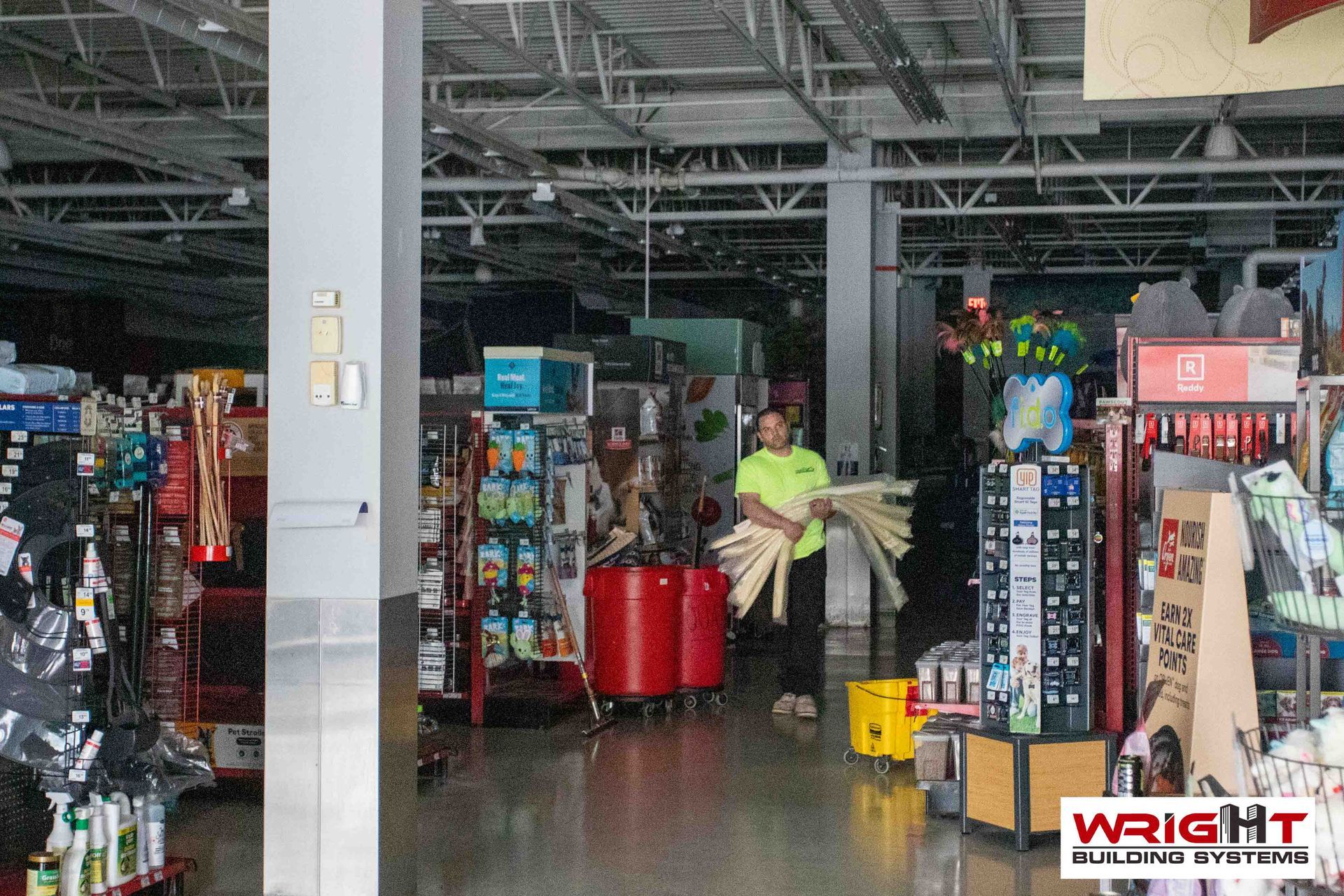
Work with the Public and Community Partners
Storms can push a community to its edge. Luckily, we have seen incredible examples across the country of communities and regions recovering through the strength of organized efforts.
Community members should check in with each other first and then focus on spreading the word to groups and organizations that can help.
A general rule of thumb when working with the public or community partners is to have specific tasks in mind for volunteers to complete. Commercial building owners may be wary about seeking outside help for particular tasks, especially anything construction-related, where amateur volunteers could get hurt.
The team should devise tasks that most volunteers can feasibly do, such as cleaning, hauling debris, or organizing items.
Give Wright Building Systems A Call Today
Severe weather events like tornadoes, high winds, and hail can cause significant damage to commercial buildings.
Preparation is crucial in mitigating these impacts. Building owners should establish and practice robust emergency protocols, secure their buildings effectively, and conduct thorough damage assessments post-storm.
At Wright Building Systems, we are committed to supporting our clients and community with expert damage assessment and restoration services.
Our dedicated team has the equipment, technical skills, and perseverance to complete your project. Together, we can ensure your property is prepared for any storm and swiftly restored to full operation.
Let's get in touch today!

